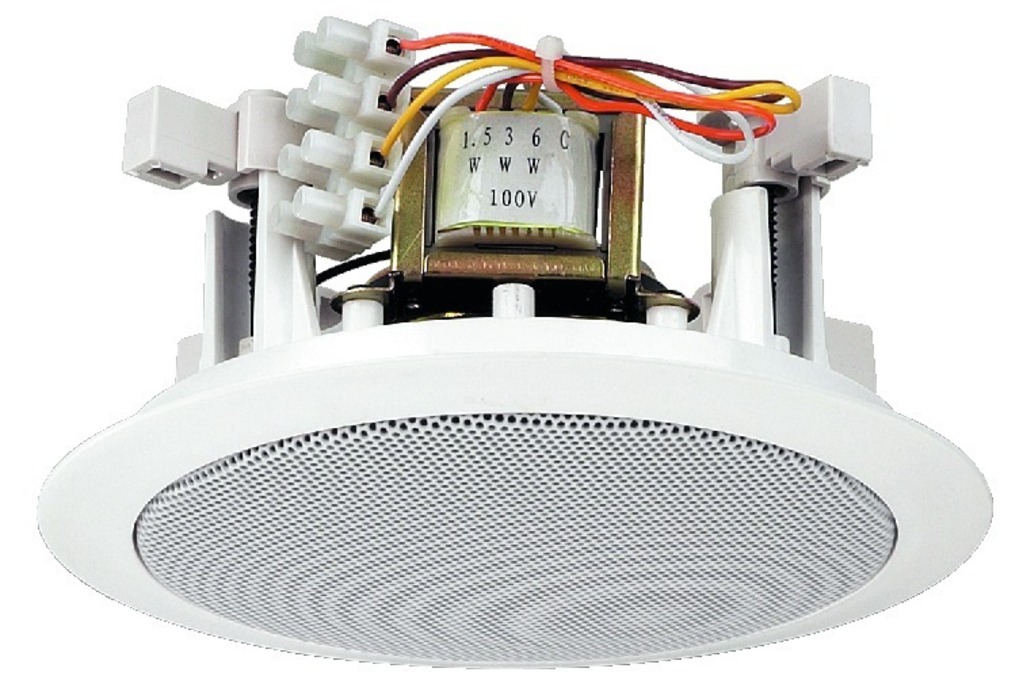2-Ohm woofers/subwoofers are somewhat common in cars where voltage is limited and sometimes they are run in parallel for 1-Ohm. But high-power car amplifiers have a built-in DC-DC voltage booster so they aren't actually limited to 12V internally.
Most car speakers are 4-Ohms whereas most home speakers are 8-Ohms.
With 8-Ohms, a "regular" amplifier, an a 12V power supply, the maximum you can theoretically get is 12V peak-to peak = 4.3VRMS, and that works-out to
2.3 Watts. With a bridge amplifier (one terminal going positive while the other goes negative and no ground to the speaker) you can get 24-peak-to-peak for 4 times the power. Then if you switch to a 4-Ohm speaker you can double the power again for about 18W. There is some voltage drop in the amplifier so you can't get the full-theoretical voltage so that works against you, but a "12V" car battery puts-out more like 14.4V and you can get more from the alternator while the engine is running so that goes in your favor.
Distributed speaker systems (like in supermarkets) are often a special kind of
constant voltage system where each speaker has a transformer with multiple
power taps (so you don't know the impedance unless you calculate it). All of the speakers are wired in parallel and in a small-quiet location you use a low-power tap, and in a larger or noisier location you can use a higher-power tap. You can run as many speakers as you want as long as you don't exceed the amplifier's power rating. Occasionally, there might be a transformer with a rotary switch on the wall to control the volume of an individual speaker (maybe in a lunch room).
do we want a power amp that's a true voltage source, or a current source?
Speakers are designed, tested, and specified with a constant voltage source.
If you look at an impedance curve for a speaker, the impedance varies a lot across the frequency range and with a current source those impedance variations would result in proportional frequency response variations and the speaker would sound terrible! (The impedance variations
do result in (inverse)
power variations but we don't care as long as the audio output is flat.)
Something like this sometimes happens with headphone amplifiers if the source impedance is too high but it's not pure current source.
-------------------------------------
High power LEDs are driven by a constant-current source.* It's an odd kind of power supply - You can short the output and you get (nearly) zero voltage as it happily maintains the output current. If you disconnect the load the voltage just goes as high as that particular supply can go as it tries to push current through an infinite resistance.
If you short a regular power supply (or a speaker output) you get excess current and it shuts down, or blows a fuse, or burns-up...
Like all diodes LEDs are non-linear and their resistance drops drastically as the voltage goes up. If you slightly exceed the specified forward operating voltage the current increases drastically and they burn-up. If you're slightly below the operating voltage the current drops more than proportionally and the LED is too dim. By controlling the current, the voltage "magically falls into place". You can wire multiple LEDs in parallel and with constant current they all light-up normally just like regular light bulbs in parallel from a normal constant voltage power supply.
* Regular little LEDs just use a series "current limiting" resistor. The voltage drop across the resistor is usually equal to the LED voltage, or higher. So usually as much, or more power is wasted in the resistor as is used by the LED. That's OK with a fraction of a watt but not with LEDs used for lighting.



